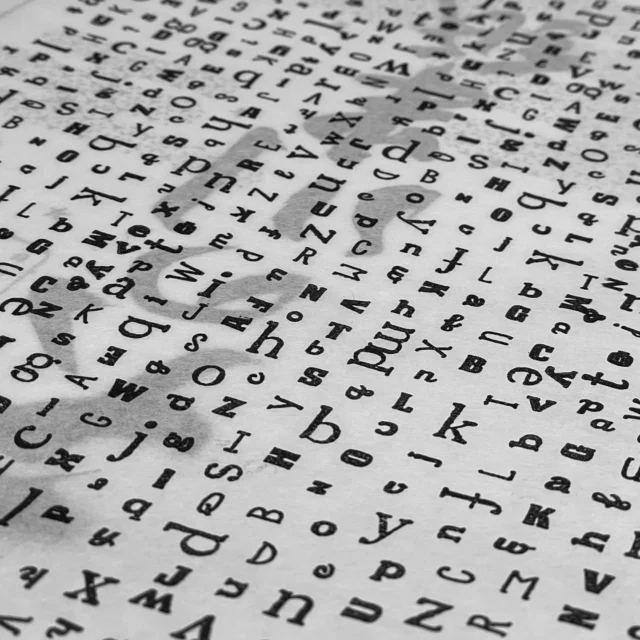The goal
Last year I decided to read the bible in chronological order (i.e., the approximate order that the books are set or written, not canonical order). I was doing well until I had surgery and then I wasn’t really able to read anything while in hospital. Then when I got out and recovered, my routine was completely shot. Well, excuses excuses, I haven’t made much progress since then.
So, I was looking for a simple bible reading plan that I could add to my calendar to encourage me to continue. There are some nice bible reading plans on this ESV Bible site, and they’re available as calendar feeds, but they seem to start on the 1st of January and I couldn’t find any way to change that. I want to pick up where I left off, or at least start from today.
My solution: CSV file
Google Calendar can import CSV files, so I thought it couldn’t be too hard to make a simple CSV file to import into my calendar. All I needed to do was:
- Find an ordered list of passages to read
- Copy the list into a spreadsheet under a column heading of “Subject”
- In the next column, with a heading of “Start Date”, add the dates on which to read the passages
- Import into Google calendar
Passage break-up
I got my bible reading plan from BiblePlan.org, where you can select to see the whole plan in undated form. I just copied the whole block of text from the web page. I could have pasted it directly into my spreadsheet and it would have populated my Subject column, but I pasted into Coda first to use the wildcard search to remove the day numbering.

Assigning dates

The magic of the dates is that you only need to type in the first two and then you can use autofill to populate the rest of the column. To use autofill (in most spreadsheet applications) select the two sequential date fields, grab the bottom right corner and drag down until you’ve filled as many rows as you need.
There are other columns that you can add to your CSV to import with your reading events. You can view an example in this Google article About CSV files.
Importing to Google Calendar

Finally, I exported my spreadsheet as a CSV file and imported it into Google Calendar (under Settings > Calendar). I added it to a new calendar called “Bible Reading”. I wouldn’t recommend adding it to your main calendar, because it will become harder to isolate all those events and make changes if you want to switch to a different reading plan or change from an all-day event to a timed event, etc.
Further improvements
Now, if I could find out if OliveTree BibleReader has a URL structure with which to open the application on the iPhone, I could add a link to each passage in the description of each event and open each passage straight from my calendar.
I hope someone finds this useful. I hope it ends up being useful for me!









Kristarella, love your style and commitment to this worthy goal. Let us all know when you’re halfway 🙂 Sarah
awesome! 2010 is the first time I am reading the Bible through! Every day I am humbled that God has allowed me this privilege. My husband and I are using D.A. Carson’s “For the Love of God”.
brilliant!
Just wanted to say thanks for putting this up. I was looking for this exact thing and I came across your directions. Anyway, thanks again and God bless!
My favourite passage of all books is Hosea 13:16 , which contains an order (or desire) of God himself.
very cool and interesting way to tackle it
Here’s an Excel alternative for removing the day numbering (assumes a bit of Excel knowledge, but not much). Once you have copied the whole block of text from the web page:
1. With your first two rows looking (roughly) like this:
Day Day + reading
1 Day 1 — Genesis 1-3
(So copied text is in column B, I’ve entered column headings in row 1 and the number 1 in A2)
2. Enter the number 2 in A3 and then use autofill (see kristarella’s assigning dates section) for the full 365 days
3. Put this formula in C3 and then use autofill (only need to select C3) to fill all the rows
=IF(A2<10,MID(B2,11,100),IF(A2<100,MID(B2,12,100),MID(B2,13,100)))
(if you're interested, 100 was just to make sure it got the whole text string without having to work out how long the longest one was)
4. Your first two rows will now look like this:
Day Day + reading Reading
1 Day 1 — Genesis 1-3 Genesis 1-3
5. So your column C will be just the Bible passages without the day numbering
6. Carry on from kristarella's "Assigning dates"
ok, so my “what your rows will look like” formatting didn’t really work, but hopefully it still makes sense
Richard — Cheers. Very useful if you don’t have a good text editor, or just want to do it all in the one program. 🙂
hey great blog! thanks for all the input. I’m not sure if you’ve looked into youversion.com or not, but they got some great reading plans available.
Thanks for simplifying my Bible reading plan. It’s of great help to read some part of the Bible daily without following a rigid schedule. In my experience opening the Bible and reading a verse randomly is much more effective than reading chronologically. You can better relate what you are reading with your day to day experiences and more importantly learn to apply what you are reading.
Apart from just reading the Bible I personally liked a method suggested by Jeff Craig to read the Bible in a meaningful manner through a method known as Journaling.
http://www.crosspointechurch.tv/bible.html
It has made a lot of difference in my understanding of the Bible with respect to my life.
“Thanks for simplifying my Bible reading plan. It’s of great help to read some part of the Bible daily without following a rigid schedule. In my experience opening the Bible and reading a verse randomly is much more effective than reading chronologically. You can better relate what you are reading with your day to day experiences and more importantly learn to apply what you are reading.
Apart from just reading the Bible I personally liked a method suggested by Jeff Craig to read the Bible in a meaningful manner through a method known as Journaling.
http://www.crosspointechurch.tv/bible.html
It has made a lot of difference in my understanding of the Bible with respect to my life. “
I have been looking for a way to put my bible reading plans onto a a program that could post the days scriptural texts and actual bible readings on a web page that could automatically post the day’s readings. This might help me. My Apple iweb site can’t do the automatic posting. Where you able to get your readings up and if so how could I review them? Thanks for your help. Gene
Gene — I didn’t really try to get my bible readings up on a website. The calendar thing worked for me (for a while), you could try using RSS as a conduit for publishing readings, I’m not sure what the best way to go about that might be. BibleGateway.com has various RSS tools, but with limited control over which passage is displayed (from memory).
GREAT blog post Kristen! Thanks for sharing. I followed something similar to create my own Chronological Bible Reading Plan on my Google Calendars. Thanks for the inspiration and the direction.
Shaun — Cheers, good luck with it!
Unfortunately I didn’t succeed last year to follow through with my reading plan. I got bogged down in one of the law books and the calendar method didn’t work for me in the end because one missed day = a lot of catch up. And I had some depression issues in winter that took a lot of effort to deal with; some habits went out the window.
I was reading the bible one-to-one with some ladies from church though, which was extremely helpful and God taught me a lot last year, despite myself and my weaknesses!